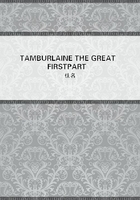We know that the loadstone has a wonderful power of attracting iron.When I first saw it I was thunderstruck, for I saw an iron ring attracted and suspended by the stone; and then, as if it had communicated its own property to the iron it attracted, and had made it a substance like itself, this ring was put near another, and lifted it up; and as the first ring clung to the magnet, so did the second ring to the first.A third and a fourth were similarly added, so that there hung from the stone a kind of chain of rings, with their hoops connected, not interlinking, but attached together by their outer surface.Who would not be amazed at this virtue of the stone, subsisting as it does not only in itself, but transmitted through so many suspended rings, and binding them together by invisible links? Yet far more astonishing is what I heard about this stone from my brother in the episcopate, Severus bishop of Milevis.He told me that Bathanarius, once count of Africa, when the bishop was dining with him, produced a magnet, and held it under a silver plate on which he placed a bit of iron; then as he moved his hand with the magnet underneath the plate, the iron upon the plate moved about accordingly.The intervening silver was not affected at all, but precisely as the magnet was moved backwards and forwards below it, no matter how quickly, so was the iron attracted above.I have related what I myself have witnessed; I have related what I was told by one whom I trust as I trust my own eyes.Let me further say what I have read about this magnet.When a diamond is laid near it, it does not lift iron; or if it has already lifted it, as soon as the diamond approaches, it drops it.These stones come from India.But if we cease to admire them because they are now familiar, how much less must they admire them who procure them very easily and send them to us? Perhaps they are held as cheap as we hold lime, which, because it is common, we think nothing of, though it has the strange property of burning when water, which is wont to quench fire, is poured on it, and of remaining cool when mixed with oil, which ordinarily feeds fire.
CHAP.5.--THAT THERE ARE MANY THINGS WHICH REASON CANNOT ACCOUNT FOR, AND WHICHARE NEVERTHELESS TRUE.
Nevertheless, when we declare the miracles which God has wrought, or will yet work, and which we cannot bring under the very eyes of men, sceptics keep demanding that we shall explain these marvels to reason.And because we cannot do so, inasmuch as they are above human comprehension, they suppose we are speaking falsely.These persons themselves, therefore, ought to account for all these marvels which we either can or do see.And if they perceive that this is impossible for man to do, they should acknowledge that it cannot be concluded that a thing has not been or shall not be because it cannot be reconciled to reason, since there are things now in existence of which the same is true.I will not, then, detail the multitude of marvels which are related in books, and which refer not to things that happened once and passed away, but that are permanent in certain places, where, if any one has the desire and opportunity, he may ascertain their truth; but a few only I recount.The following are some of the marvels men tell us:--The salt of Agrigentum in Sicily, when thrown into the fire, becomes fluid as if it were in water, but in the water it crackles as if it were in the fire.
The Garamantae have a fountain so cold by day that no one can drink it, so hot by night no one can touch it.(1) In Epirus, too, there is a fountain which, like all others, quenches lighted torches, but, unlike all others, lights quenched torches.There is a stone found in Arcadia, and called asbestos, because once lit it cannot be put out.The wood of a certain kind of Egyptian fig-tree sinks in water, and does not float like other wood; and, stranger still, when it has been sunk to the bottom for some time, it rises again to the surface, though nature requires that when soaked in water it should be heavier than ever.Then there are the apples of Sodom which grow indeed to an appearance of ripeness, but, when you touch them with hand or tooth, the peal cracks, and they crumble into dust and ashes.The Persian stone pyrites burns the hand when it is tightly held in it and so gets its name from fire.In Persia too, there is found another stone called selenite, because its interior brilliancy waxes and wanes with the moon.Then in Cappadocia the mares are impregnated by the wind, and their foals live only three years.Tilon, an Indian island, has this advantage over all other lands, that no tree which grows in it ever loses its foliage.















